Penguin supports copyright. Copyright fuels creativity, encourages diverse voices, promotes free speech, and creates a vibrant culture. Thank you for buying an authorized edition of this book and for complying with copyright laws by not reproducing, scanning, or distributing any part of it in any form without permission. You are supporting writers and allowing Penguin to continue to publish books for every reader.
Illustration credits appear .
P REFACE
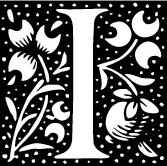 N 2017 WE MARK the five-hundredth anniversary of one of the seminal moments in Western civilization: the inception of the Protestant Reformation. From small beginnings, a theological quarrel in eastern Germany, emerged a tumultuous movement of renewal and reform; questioning, defiant, and ultimately utterly divisive. Within a generation the whole concept of reform had changed its meaning. Advocates of the movement now known as Protestantism had separated themselves from the Western Catholic tradition; the division was permanent and, as it turned out, irreconcilable. Over the next two centuries Europe divided into warring churches, fractured families, and hostile states. Enmity between Protestant and Catholic shaped European politics and ignited wars of murderous hatred. Christendom turned against the enemy within. All over Europe state power was enlisted to execute as heretics or traitors those who repudiated the local religion, whether this was Protestant or Catholic.
N 2017 WE MARK the five-hundredth anniversary of one of the seminal moments in Western civilization: the inception of the Protestant Reformation. From small beginnings, a theological quarrel in eastern Germany, emerged a tumultuous movement of renewal and reform; questioning, defiant, and ultimately utterly divisive. Within a generation the whole concept of reform had changed its meaning. Advocates of the movement now known as Protestantism had separated themselves from the Western Catholic tradition; the division was permanent and, as it turned out, irreconcilable. Over the next two centuries Europe divided into warring churches, fractured families, and hostile states. Enmity between Protestant and Catholic shaped European politics and ignited wars of murderous hatred. Christendom turned against the enemy within. All over Europe state power was enlisted to execute as heretics or traitors those who repudiated the local religion, whether this was Protestant or Catholic.
These bitter, brutal divisions would prove enduring. In 1685 the king of France would demonstrate his piety by expelling his remaining Protestant subjects: perhaps as many as nine hundred thousand were forced to leave their homes forever. Three years later England expelled its king for the offense of being Catholic; a subsequent law disqualifying anyone from inheriting the crown if he or she married a Catholic was repealed only in 2013. The divisions and corrosive loyalties of Old Europe were also transported across the Atlantic: it was only in 1960 that the United States elected its first Catholic president, and then by the narrowest of margins.
The event chosen by history to mark the beginning of these transforming events is, set in this context, astonishingly mundane. We now date the Reformation from the day, October 31, 1517, when a little-known German professor proposed an academic disputationan event so routine in sixteenth-century universities that no one at the time thought it worth recording whether the propositions for debate were printed and posted up on the normal university billboard, the door of a local church. The professor, of course, was Martin Luther, and his propositions, the ninety-five theses against indulgences, set off an unexpectedly lively debate. Within five years the German church was in turmoil, and Luther was a condemned heretic and the most famous man in Germany.
How an academic quarrel in northeastern Germany became the seed of a great movement takes some explaining. It will not be accomplished here by offering another biography of Luther, and this is not my intention. Luther was, as will be seen, a remarkable man, a person of courage and talent who met his moment of destiny with extraordinary skill and resourcefulness. His life and works have been the subject of study and reappraisal since his own lifetime to the present day, and the anniversary will be the opportunity for a further stocktaking. The purpose of this book is rather different. What will concern us here is how, in the very different communication environment of five hundred years ago, a theological spat could become a great public event, embracing churchmen and laypeople over a wide span of the European landmass.
None of this was as it should have been. In 1517 the church hierarchy was very confident of its ability to close down the hubbub around Luther. The usual channels, a confidential letter to persons of influence, underpinned by a judicial process in Rome, should have sufficed to silence a turbulent priest. There was no reason that the criticism of indulgences, fairly commonplace already in intellectual circles, should become a toxic public event. Most of all, there was no reason to believe that Electoral Saxony, a medium-sized state far from the main centers of European power politics, could incubate an event of European importance.
To understand how this came about we need to investigate a very strange alignment of events and circumstances that allowed Luther to capture the public imagination, but first of all to survive. Luther, like most of the great figures in history, was also very lucky. He was fortunate in the protection he received from influential patrons, and in the fact that they could see how protecting him could suit their purposes. He was fortunate in his friends. He also chose his moment well. When Luther first spoke out against indulgences, Europe was beginning to embrace, albeit with some caution, a new and powerful communication process, the printing press. It was sixty years since Johannes Gutenberg had announced, to general applause, the success of his experiments printing with moveable type, but the long-term consequences of this technological development were still decidedly uncertain. Those who enthusiastically embraced the new medium found it was remarkably difficult to make money producing printed books: most of the first printers lost money and many went bankrupt. Chastened, the second generation took refuge in conservative subjects. It was by no means clear how or why printing could serve a great movement of change. Printers, in fact, discovered that the most reliable profits lay in servicing the needs of traditional religion. They would need some persuading to abandon this steady, established business.
It was thus far from certain exactly how print would be relevant to the rumbling ecclesiastical spat in the north German churches. Wittenberg, Luthers base in Saxony, had no printing press at all until 1502; the whole of the half century of experimentation and growth since Gutenberg had passed it by. Luther himself had reached his maturity, and a position of modest responsibility and respect in his local order, without publishing a book. Yet within five years of penning the ninety-five theses, he was Europes most published authorever. How he achieved this was the most extraordinary of the Reformations multiple improbabilities. It is also the story of this book.
It is a story that sees Luther blossoming almost overnight as a writer of extraordinary power and fluency, a natural stylist in a genre that had not to that point particularly valued these skills. In the process Luther created what was essentially a new form of theological writing: lucid, accessible, and above all short. Crucially, at an early stage of the furor caused by the criticisms of indulgences, Luther made the bold and radical decision to speak beyond an informed audience of trained theologians and address the wider German public in their own language, German. This decision to move beyond the language of scholarship, Latin, was deeply controversial, but it allowed complex theological ideas to be presented to a nonspecialist audience. It also put his opponents at a disadvantage from which they never fully recovered. Certainly it vastly increased the potential market for Luthers books; Germanys printers responded with a hungry enthusiasm.


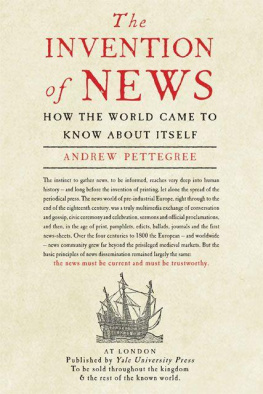
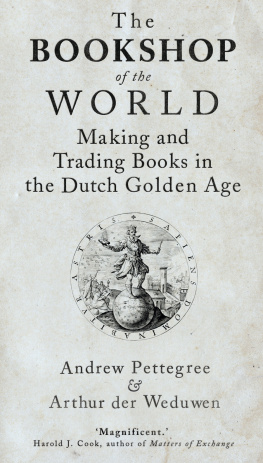

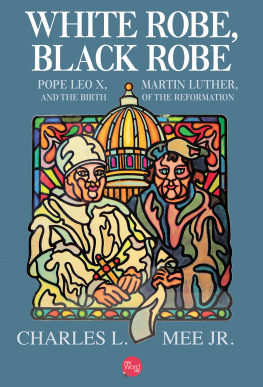
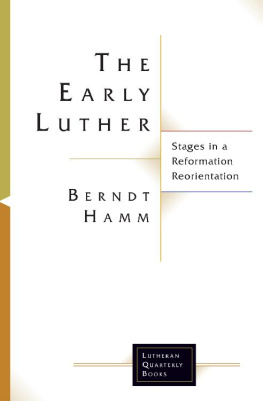

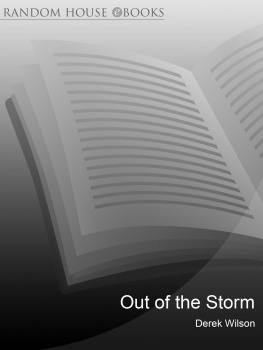

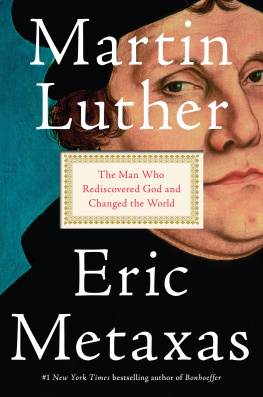
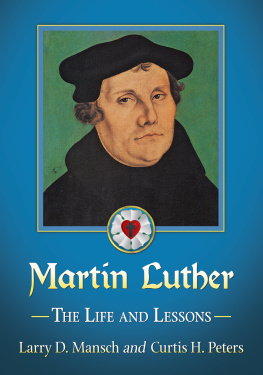
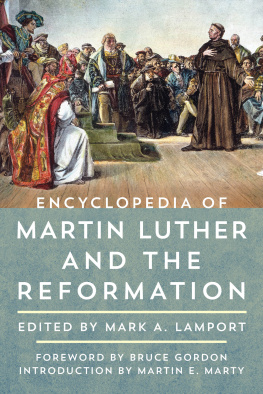



 N 2017 WE MARK the five-hundredth anniversary of one of the seminal moments in Western civilization: the inception of the Protestant Reformation. From small beginnings, a theological quarrel in eastern Germany, emerged a tumultuous movement of renewal and reform; questioning, defiant, and ultimately utterly divisive. Within a generation the whole concept of reform had changed its meaning. Advocates of the movement now known as Protestantism had separated themselves from the Western Catholic tradition; the division was permanent and, as it turned out, irreconcilable. Over the next two centuries Europe divided into warring churches, fractured families, and hostile states. Enmity between Protestant and Catholic shaped European politics and ignited wars of murderous hatred. Christendom turned against the enemy within. All over Europe state power was enlisted to execute as heretics or traitors those who repudiated the local religion, whether this was Protestant or Catholic.
N 2017 WE MARK the five-hundredth anniversary of one of the seminal moments in Western civilization: the inception of the Protestant Reformation. From small beginnings, a theological quarrel in eastern Germany, emerged a tumultuous movement of renewal and reform; questioning, defiant, and ultimately utterly divisive. Within a generation the whole concept of reform had changed its meaning. Advocates of the movement now known as Protestantism had separated themselves from the Western Catholic tradition; the division was permanent and, as it turned out, irreconcilable. Over the next two centuries Europe divided into warring churches, fractured families, and hostile states. Enmity between Protestant and Catholic shaped European politics and ignited wars of murderous hatred. Christendom turned against the enemy within. All over Europe state power was enlisted to execute as heretics or traitors those who repudiated the local religion, whether this was Protestant or Catholic.